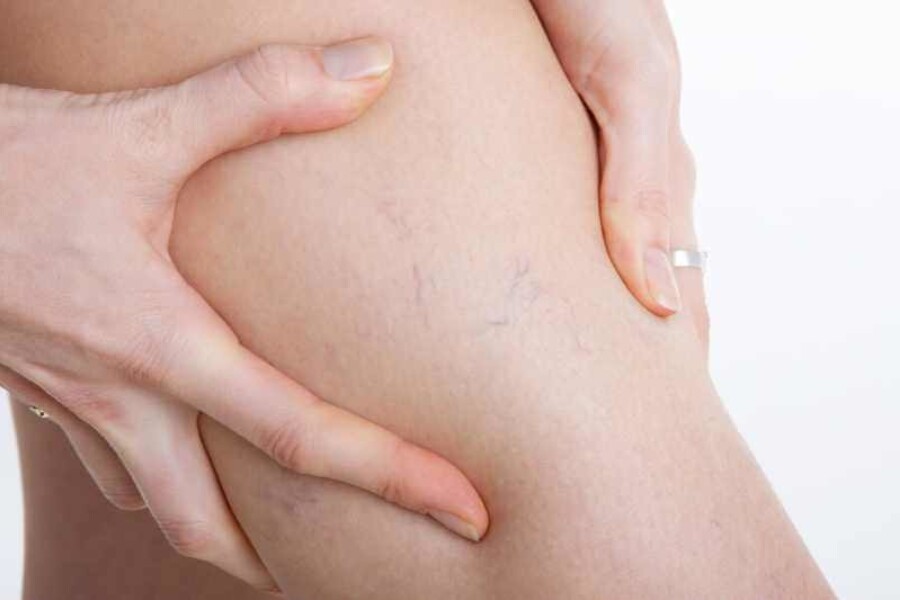How Serious is Vein Disease?

Vein disease is incredibly common — and manageable. But if left untreated, what starts as a small issue can lead to potentially dangerous complications.
Chronic venous insufficiency (CVI) is a medical condition in which a person’s veins are unable to properly transport blood from the legs back to the heart. It’s a condition that impacts many, as more than 200,000 cases of CVI are reported in the U.S. alone each year.
The most common symptom associated with CVI is the appearance of varicose or spider veins in the leg area, which doesn’t sound particularly concerning on the surface. However, if left untreated, venous insufficiency can cause far more serious complications like ulcers, bleeding, and a life-threatening condition called deep vein thrombosis (DVT).
To make sure you don’t fall victim to these complications, the very first step is to identify if you could be suffering from even a mild case of CVI. If any of the following characteristics apply, you are potentially at greater risk of developing the condition and should consider consulting a physician or vein specialist:
Overweight
Female
Pregnant
Older
Physically inactive
A smoker
Family history of varicose veins
Treat CVI to Avoid Dangerous Complications
As we mentioned above, symptoms of CVI range from the cosmetic to the potentially life-threatening. Some of the most common include swelling of the feet and ankles, itchy and irritated skin, cramping, aching legs, skin discoloration, skin sores or ulcers, and varicose or spider veins.
If left untreated, varicose veins in particular can pose a significant threat, as they become enlarged and/or deteriorate over time. If your venous insufficiency is so great that blood pools in the varicose veins and causes them to swell further, painful ulcers may develop and spontaneous bleeding can occur. Although the extent of these complications will of course vary from case to case, leaving CVI untreated at the very least will result in the continued display of symptoms like swelling, itching, pain, and fatigue.
In more extreme cases, patients can develop DVT — the formation of a blood clot in the leg that can prove fatal if it makes its way to the lungs. So if you’re exhibiting any symptoms of CVI, it’s crucial that you seek immediate treatment to eliminate the potential for DVT altogether.
No Shortage of Treatment Options
Today, patients have access to a wide range of available treatments for CVI — but oftentimes, the best approach is to simply take proactive measures to improve blood flow through the legs. For instance, one of the most common treatments doctors recommend for CVI is to wear compression stockings. These specially-designed socks gently compress the veins in your legs to increase circulation and reduce pain in the area. In some instances, simply elevating your legs periodically throughout the day can be enough to do the trick.
If you’re experiencing skin irritation, ask your doctor about moisturizers and topical creams — he or she may recommend an over-the-counter product or prescribe a medicated ointment, depending on the severity of your condition.
Of course, you can boost the efficacy of all of these treatment methods by making healthy lifestyle choices that promote better circulation — such as exercising regularly, eating a balanced diet, avoiding sitting or standing for extended periods, and wearing comfortable shoes.
Should your symptoms become so serious as to warrant a medical procedure, doctors look to several options to remove the damaged varicose vein(s). Endovenous Laser Treatment (ELT), Radiofrequency Ablation (RFA), and sclerotherapy are all distinct, approved methods of targeting and destroying malfunctioning veins, but the end goal is the same: allowing the body to naturally reroute blood flow to healthier veins.
ELT and RFA both entail the insertion of a small catheter into the vein; then, either a laser or a high frequency radio wave heats the tissue, dissolving it back into the body. Sclerotherapy works similarly, but instead uses a saline solution to dissolve the vein.
While CVI is unlikely to be life-threatening in itself, the complications that arise from neglecting treatment are too serious to ignore. And with so many cost-effective treatment options available, there’s no reason not to address the issue at the onset. If you suffer from varicose veins or any of the symptoms we’ve listed, speak to your doctor or a vein specialist about the simple steps you can take to prevent or treat venous insufficiency.